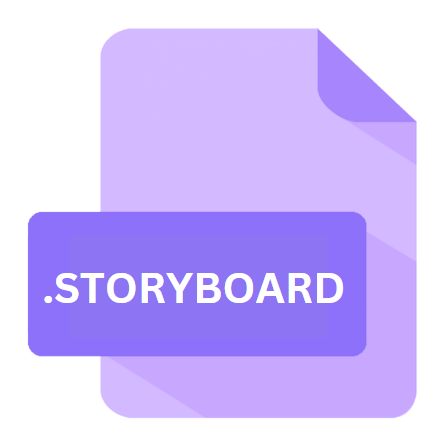.STORYBOARD File Extension

Xcode Interface Builder Storyboard
| Developer | Apple |
| Popularity | |
| Category | Developer Files |
| Format | .STORYBOARD |
| Cross Platform | Update Soon |
What is an STORYBOARD file?
.STORYBOARD files serve as blueprints for user interfaces within Xcode projects. They encapsulate the visual layout, design elements, navigation flow, and interactivity of an application’s screens or views.
Essentially, they represent a graphical representation of the app’s interface, allowing developers to design and customize various components seamlessly.
More Information.
The transition to storyboards marked a paradigm shift in iOS and macOS development. It aimed to streamline the UI design process by consolidating multiple interface screens into a single visual canvas.
This facilitated better visualization of app flows and enhanced collaboration among developers and designers.
Moreover, storyboards introduced features like segues, which simplified navigation between screens, and auto layout, which ensured adaptability across various device sizes and orientations.
Origin Of This File.
The inception of .STORYBOARD files can be traced back to the evolution of Xcode, Apple’s integrated development environment (IDE).
Before the introduction of storyboards, interface design in Xcode was predominantly accomplished through Interface Builder, where developers created individual nib files for each interface screen.
As applications grew in complexity and scale, managing numerous nib files became cumbersome. Hence, Apple introduced storyboards with Xcode 4 in 2011 as a more efficient alternative for designing app interfaces.
File Structure Technical Specification.
.STORYBOARD files are XML-based documents that adhere to a predefined structure dictated by Apple’s Interface Builder framework.
They encompass a hierarchy of scenes, view controllers, and UI elements arranged graphically within the Interface Builder canvas.
Each element is represented by XML tags, with attributes specifying properties such as size, position, appearance, and connections to code files.
The technical specifications of .STORYBOARD files include:
- XML Format: The content of .STORYBOARD files are encoded in XML format, making them human-readable and editable with standard text editors.
- Object Archive: Within the XML structure, objects such as view controllers, views, and constraints are archived using a binary format, enhancing performance and reducing file size.
- Storyboard Segues: Segues, which define transitions between view controllers, are represented as XML elements with attributes specifying segue types and destinations.
How to Convert the File?
Converting .STORYBOARD files to other formats or vice versa is not a common practice due to their specialized nature. Developers may explore alternative approaches to achieve similar outcomes:
- Programmatic UI: Instead of relying solely on Storyboards, developers can opt for programmatic UI creation using Swift or Objective-C. This approach offers greater flexibility and control over the UI layout and behavior, albeit at the cost of increased development complexity.
- Storyboard References: To modularize and reuse UI components across multiple Storyboard files, developers can leverage storyboard references. By breaking down the UI into smaller, manageable units, developers can mitigate the need for extensive file conversion.
- Nib to Storyboard Migration: In scenarios where legacy projects utilize .xib files, developers may consider migrating these files to Storyboards using Xcode’s built-in migration tools. This process involves consolidating UI components from multiple .xib files into a single Storyboard, streamlining the development workflow.
Advantages And Disadvantages.
Advantages:
- Visual Representation: .STORYBOARD files provide a visual representation of app interfaces, aiding developers in designing and refining UI layouts.
- Streamlined Workflow: Consolidating multiple interface screens into a single storyboard simplifies navigation and reduces the complexity of Xcode projects.
- Storyboard Segues: Segues facilitate intuitive navigation between screens, eliminating the need for manual instantiation and management of view controllers.
Disadvantages:
- Merge Conflicts: Collaborative development on .STORYBOARD files can lead to merge conflicts in version control systems, especially when multiple developers modify the same storyboard simultaneously.
- Performance Overhead: Large storyboards with numerous scenes and view controllers may experience performance overhead during loading and rendering within Xcode’s Interface Builder.
- Versioning Challenges: Versioning .STORYBOARD files poses challenges, as changes made to the storyboard may affect layout constraints and segue connections, necessitating careful management of version history.
How to Open STORYBOARD?
Open In Windows
- Third-Party Tools: While Xcode, the native IDE for STORYBOARD files, is not available on Windows, you can use third-party tools like Xamarin Studio or Visual Studio with Xamarin.iOS installed. These tools provide support for developing iOS applications on Windows and can open STORYBOARD files for editing.
Open In Linux
- Xcode on macOS (via Remote Access): If you have access to a Mac machine, you can remotely connect to it using tools like VNC or SSH and open STORYBOARD files using Xcode. This requires a network connection between your Linux machine and the Mac.
Open In MAC
- Xcode: STORYBOARD files are best opened and edited using Xcode, which is Apple’s official IDE for macOS and iOS development. Xcode is available for free on the Mac App Store.
Open In Android
Open In IOS
- Xcode: For iOS developers, opening STORYBOARD files on iOS devices is not relevant since Xcode, the primary development tool, is only available on macOS. STORYBOARD files are typically used during the development phase on macOS.













